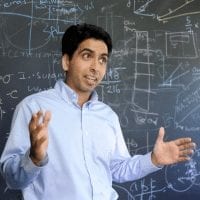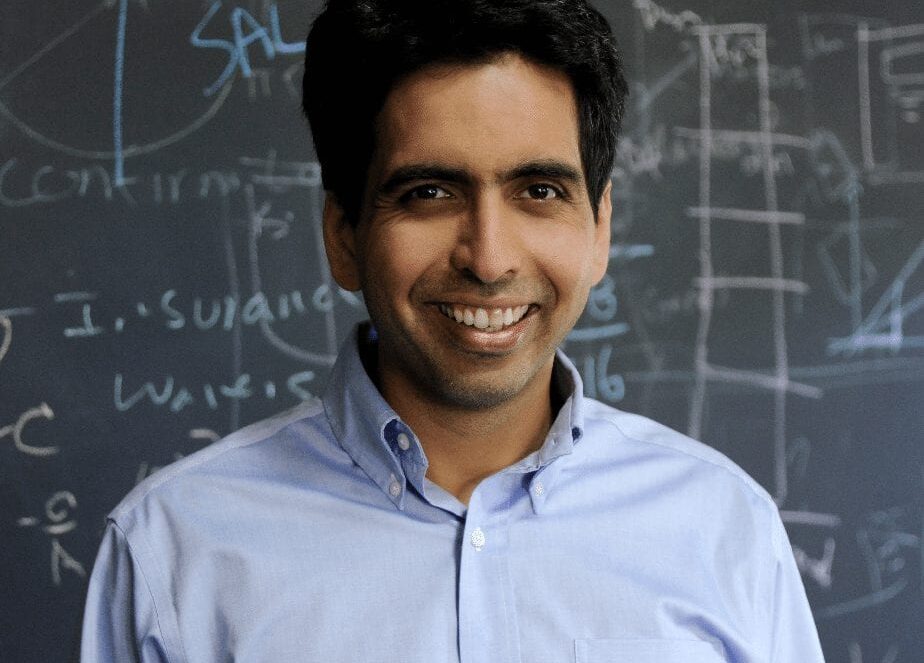S al Khan, founder of the Khan Academy, took time to explore current educational challenges and strategies to consider. Khan also shares what it’s like to be “Sal Khan” and how we should all dream big. Khan Academy recently launched the You Can Learn Anything movement to help students develop a strong learning mindset and they have partnered with the College Board. Khan Academy is partnering with the College Board to provide free, world-class preparation materials for the redesigned 2016 SAT, in hopes to level the playing field and democratize access to higher education
Dr. Berger: Let’s explore the “growth mindset” you spoke of in an op-ed, in the context of our greater education system. If we are to collectively grow into a new iteration of U.S. education, both K-12 and higher education, how can we embrace the struggle of change as a positive as opposed to the current and often negative narrative?
Sal Khan: If we want our children to develop a growth mindset, we as adults must set an example, stepping out of our comfort zones to really re-imagine our education system. This won’t be easy – changing any system is hard work – but it’s an incredible opportunity.
If we create personalized, mastery-based schools where more class time is devoted to human interaction – and if we’re candid about the mistakes we make and the lessons we learn along the way – we can transform student attitudes toward learning.
DB: What lessons have we learned about the methods students like to consume educational material and have we fully realized the potential of video’s role in learning?
SK: One important lesson we’ve learned is that students want to learn in an active way – and in fact, students learn best by doing, not by sitting passively. Videos can give students on-demand access to the information they need, but videos alone aren’t the full answer.
That’s why Khan Academy has also invested in creating a personalized dashboard with interactive practice problems for students. And the ideal way for students to use our resources is with the support of a teacher or other mentor in a learning community.
In a classroom like this, video and other online learning tools can free up class time for higher-order activities. Teachers can spend less time lecturing, grading, and carrying out administrative tasks and more time facilitating discussions and projects and working with students one-on-one.
DB: Have we reached a crossroads in what a teacher is, their value proposition and role in education? I say this as we have wavered between methods of delivery, “ideal” personalities and styles. Many believe teachers are actually facilitators and not technically teachers. Where do you stand on this issue given Khan Academy’s ability to take micro-lessons and unveil them to the world one lesson at a time without the need to have a conventional classroom?
SK: I think tools like Khan Academy can empower teachers to connect with their students on a deeper level. Teachers can spend less time on routine tasks like lecturing and grading and more time mentoring students and building relationships with them.
 I saw this firsthand when I tutored my cousins in math. They didn’t need me to explain everything to them – they needed me to inspire and motivate them, and provide targeted help when they struggled with specific concepts. What mattered most was the fact that I took a direct interest in my cousins’ individual needs. My hope is that technology will allow teachers to focus even more on this kind of mentorship.
I saw this firsthand when I tutored my cousins in math. They didn’t need me to explain everything to them – they needed me to inspire and motivate them, and provide targeted help when they struggled with specific concepts. What mattered most was the fact that I took a direct interest in my cousins’ individual needs. My hope is that technology will allow teachers to focus even more on this kind of mentorship.
DB: How do you think we should look at curriculum models? Should we take an approach that says students can ideally learn from discrete learning opportunities (ex. One online lesson) self-constructing the learning path or should we stay with conventional models that mirror dominos falling one-by-one and in a predefined order of operations?
SK: I think it’s crucial for students to take control of their own learning. Different students learn different concepts at different paces, and they have different gaps in their foundational knowledge. That’s why personalized learning is so much more powerful than a one-size-fits-all approach.
Students benefit from both the guidance of a teacher and the freedom to explore. Of course, we should help students navigate from more basic skills to more advanced ones, and gently walk them back to prerequisite material when they’re struggling. But the goal should be mastery – not covering content just for the sake of checking off all the boxes.
DB: How do you conceptualize the life cycle of Khan Academy? Will we look back and say you created a needed flashpoint that ignited sustained change in educational delivery and experience?
SK: I think we’re at an inflection point in human history. For a long time, we’ve recognized that personalized learning is the ideal, but it’s also been expensive and out of reach for most people. Now, for the first time, we have the opportunity to make personalized learning accessible to everyone, thanks to advances in technology.
Khan Academy can’t do this alone, but I think we’ve helped to catalyze the conversation, and I think we can be part of the solution. Our hope is to work with other like-minded individuals and organizations around the world to affect lasting and meaningful change.
DB: I am not sure any of us could have comprehended the impact and celebrity Khan Academy has become. How is your life different now that you are looked to for generational change and direction?
SK: In most ways, my life is very similar to when I first started Khan Academy. I still spend a lot of time creating content and helping push our software forward, and I still enjoy these things tremendously. The biggest change is that instead of doing all this by myself, I get to work with an incredible team. Khan Academy has been extremely lucky to attract some of the world’s leading thinkers in education, who are passionate about our mission. We’re proud of what we’ve accomplished so far, but we’re even more excited about what’s yet to come.
DB: What can the rest of us learn from your success as both an innovator and visionary that might help us all think and dream big?
SK: Everyone has a unique context, but I think there are some general principles that can help anyone who wants to innovate. For me, the first step was identifying a problem and understanding it in a personal way, so I’d recommend starting there. Then find a place where you can have a direct impact, and as you start to see that impact, think deeply about how you can scale it. In my case, I started the work that led to Khan Academy to help me tutor my cousins.
Once I found tools that seemed to work, I began to think about how I could refine them to reach more and more students. Finally, it’s helpful to think on a multi-generational timeline, which can encourage more ambitious goals – like a free, world-class education for anyone, anywhere.
These are the kind of goals that keep you going and get others excited about your work. They make take a lifetime to achieve – but they’re worth devoting your life to.
